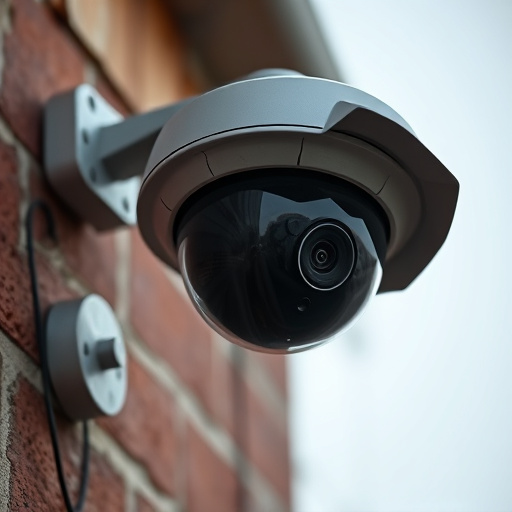Battery operated dummy camera installation enhances security with strategic mounting, using AA or rechargeable batteries, and placing them in versatile locations. Infrared sensor technology offers 24/7 monitoring without grid electricity, ideal for covert surveillance. Select compatible IR LEDs for optimal performance, considering wavelength, current draw, and brightness. Ethical installation balances security and privacy through proper labeling, informed consent, and respectful placement.
“Uncover the power of enhanced security with a battery-operated dummy camera featuring infrared sensor technology. This comprehensive guide delves into the intricacies of these devices, from understanding their core functionality to selecting the perfect LED for optimal performance. Learn how to install your dummy camera effortlessly in just simple steps. Additionally, explore crucial security and privacy considerations to ensure peace of mind. Discover why these innovative solutions are transforming home protection.”
- Understanding Battery-Operated Dummy Cameras
- Benefits of Infrared Sensor Technology
- Choosing the Right LED for Your Setup
- Installation Process: Step-by-Step Guide
- Security and Privacy Considerations
Understanding Battery-Operated Dummy Cameras
Battery-operated dummy cameras, also known as fake or mock security cameras, are a popular choice for home and business owners looking to enhance their security and deter potential intruders. These devices offer a simple yet effective solution, especially in areas where permanent wiring is impractical or during temporary security concerns. Understanding how to install these cameras is key to maximizing their benefits.
The installation process typically involves mounting the camera at strategic locations, ensuring it has a clear view of the area to be monitored. Many battery-operated models come with adjustable mounts and various attachment options, allowing for versatile placement. Once installed, these cameras can run on standard AA batteries or rechargeable batteries, providing power for extended periods without the need for complex wiring. This flexibility makes them ideal for outdoor settings, temporary events, or as a supplemental security measure alongside existing surveillance systems.
Benefits of Infrared Sensor Technology
Infrared sensor technology offers a range of advantages for security and surveillance systems, especially in the context of battery-operated dummy camera installations. One of the key benefits is its ability to provide round-the-clock monitoring without requiring constant power from the grid. This makes it ideal for remote or hard-to-reach locations where traditional cameras might struggle due to limited or no electricity. By using infrared LEDs, these dummy cameras can capture clear images in low-light conditions and complete darkness, ensuring 24/7 visibility.
Furthermore, infrared sensors enhance privacy and security by allowing cameras to operate silently, without emitting any visible light that could alert potential intruders. This stealthy operation is particularly valuable for covert surveillance or in environments where minimizing noise is critical. With their long-lasting battery life, these advanced sensors enable efficient and cost-effective monitoring solutions, making them a popular choice for both professional security setups and DIY home defense systems.
Choosing the Right LED for Your Setup
When selecting an infrared (IR) LED for a battery-operated dummy camera installation, compatibility is key. You’ll want to ensure that the LED’s wavelength and power output align with your camera’s requirements. Check the specifications of your dummy camera to understand its IR sensitivity and the ideal light intensity it needs for optimal performance.
Consider factors like LED color (typically 850nm or 940nm), current draw, and brightness. For most battery-powered cameras, a low-current, high-brightness IR LED is suitable. Look for LEDs designed specifically for security or surveillance applications to guarantee they’ll integrate seamlessly with your setup while providing the necessary infrared illumination for clear, nocturnal images.
Installation Process: Step-by-Step Guide
Installation Process: A Simple, Step-by-Step Guide
For a seamless integration of your battery-operated dummy camera with infrared sensors, follow this straightforward installation process. Begin by removing any protective packaging from the device, ensuring all components—including the camera body, infrared sensor module, and batteries—are present and intact. Next, locate the designated mounting points for the camera. This could be on a wall or ceiling, depending on your desired placement. Secure the camera firmly in place using the provided hardware, making sure it’s level and stable.
Connect the infrared sensor module to the camera’s dedicated port, ensuring a clean and secure fit. Then, insert the batteries into the camera’s power compartment, following the correct polarity guidelines for optimal performance. Once powered on, test the camera’s functionality, including its infrared capabilities in low-light conditions, to ensure everything operates as intended. This simple, step-by-step approach will have your battery-operated dummy camera with infrared sensor up and running in no time.
Security and Privacy Considerations
When installing battery-operated dummy cameras, it’s crucial to consider security and privacy implications. These devices, designed to mimic real cameras, can provide a false sense of security if not properly managed. It’s important to ensure that sensitive areas are not left exposed or monitored without informed consent.
Privacy advocates highlight the need for clear labeling and notification when using such cameras. Installation should be done ethically, respecting individual rights and promoting transparency. Users must also be vigilant about the type and placement of these devices to avoid potential misuse or breaches in privacy.
A Battery Operated Dummy Camera with an infrared sensor offers enhanced security and peace of mind. By understanding the technology, selecting the right LED, and following a straightforward installation process, you can easily set up a surveillance system that discourages intruders without compromising privacy. Remember, proper placement and regular maintenance are key to maximizing its effectiveness as a deterrent.
